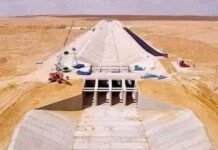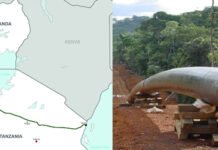Moving Bed Biofilm Reactor (MBBR) is a state-of-the-art process of processing wastewater by using a specialized biological technology process. This treatment can be utilized for both municipal and industrial sectors for de-nitrification, BOD removal and purification of water.
According to SBEF, a Taiwanese leading MBBR wastewater solution provider, since the volumetric BOD loading of MBBR’s reaction tank is 1.7 to 5 times more than activated sludge process, it can significantly reduce the required volume of the biological treatment reaction tank.
“In the demands of low contaminants concentration and high water flow (ex: river water treatment, recirculating aquaculture system), MBBR is the most cost- effective and space- saving option among all the biological treatment processes,” says SBEF.
The MBBR systems are the best water treatment solution for concentrated wastewater. The system of biological nitrogen removal (BNR) can enhance the methods of MBBR systems which increases the treatment capacity thus improving waste matter quality with no increased plant footprint.
Leon Du Casse, the Managing Director of Bio Sewage Systems, says, “There are many advantages with using (Moving bed biofilm reactors) such as:
- Very small compact footprint
- Can be used to retro fit existing plants for upgrading
- Almost any size/configuration of tanks
- Excellent nitrification
Excellent for high concentration waste water, suspended growth on the biofilters ensure that the biomass is retained in the plant and is not vulnerable to a bacterial washout.”
Bio Sewage Systems is a South African waste water treatment plant manufacturer based in Pretoria. The company offers innovative waste water treatment solutions including the MBBR waste water plants.
“Our experience has showed that by using floating media in our plants rather than fixed media has a great advantage, as the fixed media has a tendency to channel the air rather than allowing the air to be evenly distributed throughout the reactor,” adds Leon.
However, he further adds that during the low organic loading operation, MBBR can achieve low sludge yield without having sludge bulking. The biofilm system is more resistant to influent fluctuations and inhibitory substances in the water and thus it has a more stable outflow water quality. The system is easy to operate and control. It is user friendly to operators by saving time and effort on sludge management. In the A/O process, the aerobic autotrophic nitrifying bacteria can be continuously attached to the MBBR carriers in the aerobic tank and their activity will not be affected by the aerobic/ anoxic environmental changes in the A/O cycle.
The MBBR wastewater technology includes a number of features such as suited varying climate conditions from 8 to 40+ degree Celsius range.
The plant capacities range from 1000 litres/day to 7 million litres/day and provides low operating cost, indoor and outdoor installation designs, completely odourless and whisper quiet, quality manufacture, and made for harsh African conditions.
To solve major water issues, MBBR wastewater technology has been introduced and this technology uses the combination of specialized biological and advanced aeration technology along with chemical-free sterilization.
The increasing level of robust microbials are the mechanism that break down the bacteria and nutrients. Removing bacteria from sewage is not easy, but by using MBBR technology one can efficiently remove all unusable products from water and make it suitable for re-use. Both municipal and industrial markets can use this MBBR wastewater treatment solution to get irrigation quality water.
It can take less than a month to upgrade an existing activated sludge process to the MBBR processing system, making it quick, cost effective and environmentally friendlier.





